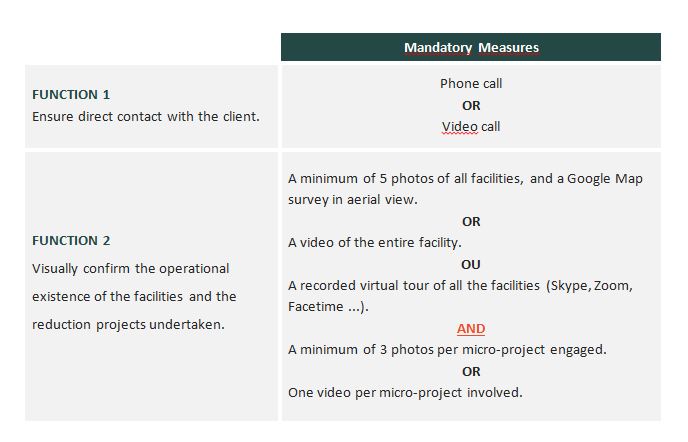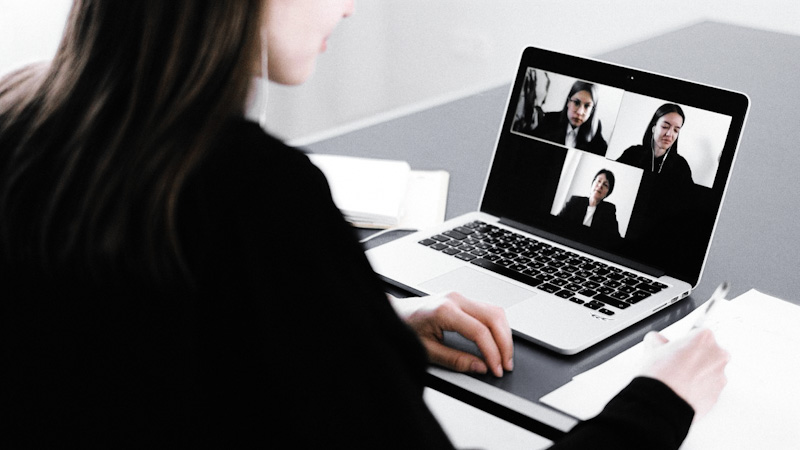In the process of realizing a carbon footprint of a building or the qualification, quantification and verification of greenhouse gas (GHG) reduction projects inherent to Will’s methodology, field audits are the necessary step of “on-site evidence gathering”, as per ISO 14064. More simply, Will’s auditors visit the site of the initiator of the reduction project, make contact with the people involved, and visually confirm the presence and operationality of the project. The main purpose of this action is to minimize the likelihood of an erroneous GHG emission declaration or the voluntary omission of significant sources of GHG emissions. It is an essential guarantee of the reliability and rigour established by Will.
However, due to the COVID 19 pandemic and the health measures related to the Quebec government’s management of this crisis, this essential step in Will’s methodology for reduction projects may be significantly affected. Restrictions on travel between regions, physical contact, and fear of transmission may lead to the cancellation of many field audits. In order to ensure the continuity of Will’s operations and to guarantee the same degree of reliability of our “intervention process”, alternative practices without physical contact must be put in place quickly.
Central to these new practices is the integration of digital tools. Their use must be thought out and coordinated in such a way as to virtually fulfill the functions of the field audit as efficiently as possible without burdening the evidence collection process for the client. Here are the solutions that we are implementing:


The first function, direct contact, is easily achieved through the use of digital cameras by phone call or video (Zoom, Skype, etc.). The second function presents more difficulties. Will needs to ensure that GHG emission reduction projects exist and are operational. We believe that a sufficient number of photographs and videos of the site and the reduction microprojects could enable us to perform this function satisfactorily. The format and quality of the digital evidence should, if possible, be uniform for all clients in order to facilitate its analysis.
On the other hand, this virtualization of the field audit is also an opportunity to integrate modelling software into the intervention process. These digital tools make it possible to check the consistency of the data provided by the customer, for example, energy consumption, according to the main parameters of the building (floor area, insulation, etc.). This will make it possible to identify anomalies or inconsistencies in the customer data and then resolve them. They could thus constitute an added value of reliability for our method, especially in the context of a virtual audit. Several conclusive tests have already been conducted with CanmetENERGY’s Retscreen software [1]. Obviously, their use implies paying attention to the margin of error and to the treatment of discrepancies and uncertainties between the model and the real case.
In addition, as part of our V6 version, we are currently working on the integration of technical solutions related to new digital technologies, such as artificial intelligence, Blockchain and 5G. These will enable us to be more efficient, increase data transparency, protection and traceability, and extend our carbon credit sales offer.
Thanks to the different solutions proposed here, we will be able to completely virtualize the intervention process without compromising the quality of WILL Solutions carbon credits. In spite of the obstacles and uncertainties created, the COVID-19 crisis must serve as an opportunity to improve our organization and methods while guaranteeing the same degree of reliability and confidence in our solutions.
Written by: Hugo Del Fa, GHG Quantifier at Will

